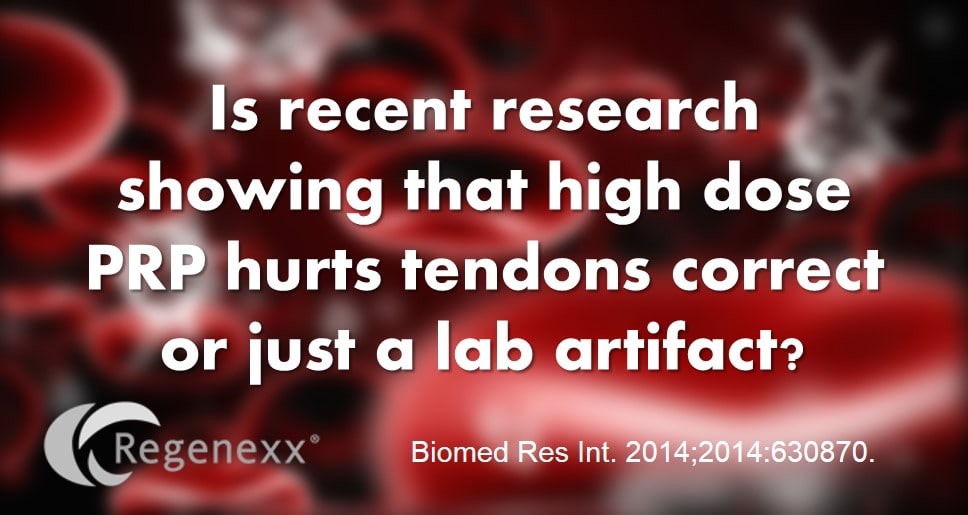Is the Giusti Paper on High Dose PRP and Tendons Correct?
Last summer a research paper was published that really shook up the of evolving medical world of platelet rich plasma. The lab study seemed to suggest that higher doses of PRP could hurt tendon cells, right at the time when many doctors were just agreeing that higher doses of PRP were likely better to treat many orthopedic issues. So is the paper right, or just poorly done?
Platelet rich plasma or PRP is made from concentrated blood platelets which have healing potential. These are commonly injected into into many areas to prompt healing, with treating sore or damaged tendons becoming a big trend. Leaders like Allan Mishra, M.D. of Stanford have answered the call to produce randomized controlled trials of PRP injections for tennis elbow (epicondylitis). However, nobody has really ever known conclusively what concentration of PRP is best for tendons.
This is one of those posts where I have to walk a fine line, as I have readers who are both doctors and patients, so I will try my best. After closely looking at the new tendon paper by Italian scientist Giusti last month, I couldn’t help but notice that their method for creating a surrogate for PRP was strange. First, rather than taking the time and energy to create various platelet preps of varying concentrations and using that to expose to tenocytes in culture, they formed a clot with PRP and then used the releasate at different concentrations. This meant that they never really studied how PRP helped or hurt tendon cells, but instead how their specific lab based brew of growth factors collected from clotted platelets helped or hurt tendons. Because of this strange methodology, I had our research lab team take a look at the study and they noticed something even stranger and more troubling. I’ll post their review below:
“Although I doubt that the authors of the paper intended to poorly design their study, in this case, it seems that they did. Regrettably, by varying the % of platelet releasate that they included in their culture media (from 10%-97%), they were effectively varying two experimental conditions simultaneously: platelet concentration (intended) and media nutrients such as sugars and essential amino acids (unintended). Unfortunately, the cells in the two highest concentration conditions that they measured in this study probably suffered due to lack of essential nutrients in the media.”
Translation? The authors of the study didn’t recognize that by upping the amount of platelet growth factors in their mix to try and simulate a high dose PRP shot, they were also depriving cells of the nutrients they need to survive which have to be added in culture. Basically, they gave the tendon cells in culture copious espresso shots (platelet growth factors) but forgot to leave food provisions. So when they came back to the Starbucks at some point later, they found a bunch of dead cells who had been previously very hyper and awake, but later starved to death.
The upshot? At this point, based on what we found, we don’t feel the results of the Giusti paper can be relied upon to significantly alter clinical practice (i.e. avoiding high platelet concentrations in tendon injections). Regrettably, we’ve already seen this paper make it into the discussion of some scientific meetings and have already seen it morphing practice patterns. In the meantime, the newly organized Interventional Orthopedics Foundation, which is turning into a consumer reports organization to help doctors navigate these early waters of regenerative orthopedics, has decided to take on this project. So IOF will redo this paper with a more appropriate experimental design and publish the results. Maybe high dose PRP helps or hurts tendon cells, right now, we just don’t know.

If you have questions or comments about this blog post, please email us at [email protected]
NOTE: This blog post provides general information to help the reader better understand regenerative medicine, musculoskeletal health, and related subjects. All content provided in this blog, website, or any linked materials, including text, graphics, images, patient profiles, outcomes, and information, are not intended and should not be considered or used as a substitute for medical advice, diagnosis, or treatment. Please always consult with a professional and certified healthcare provider to discuss if a treatment is right for you.
